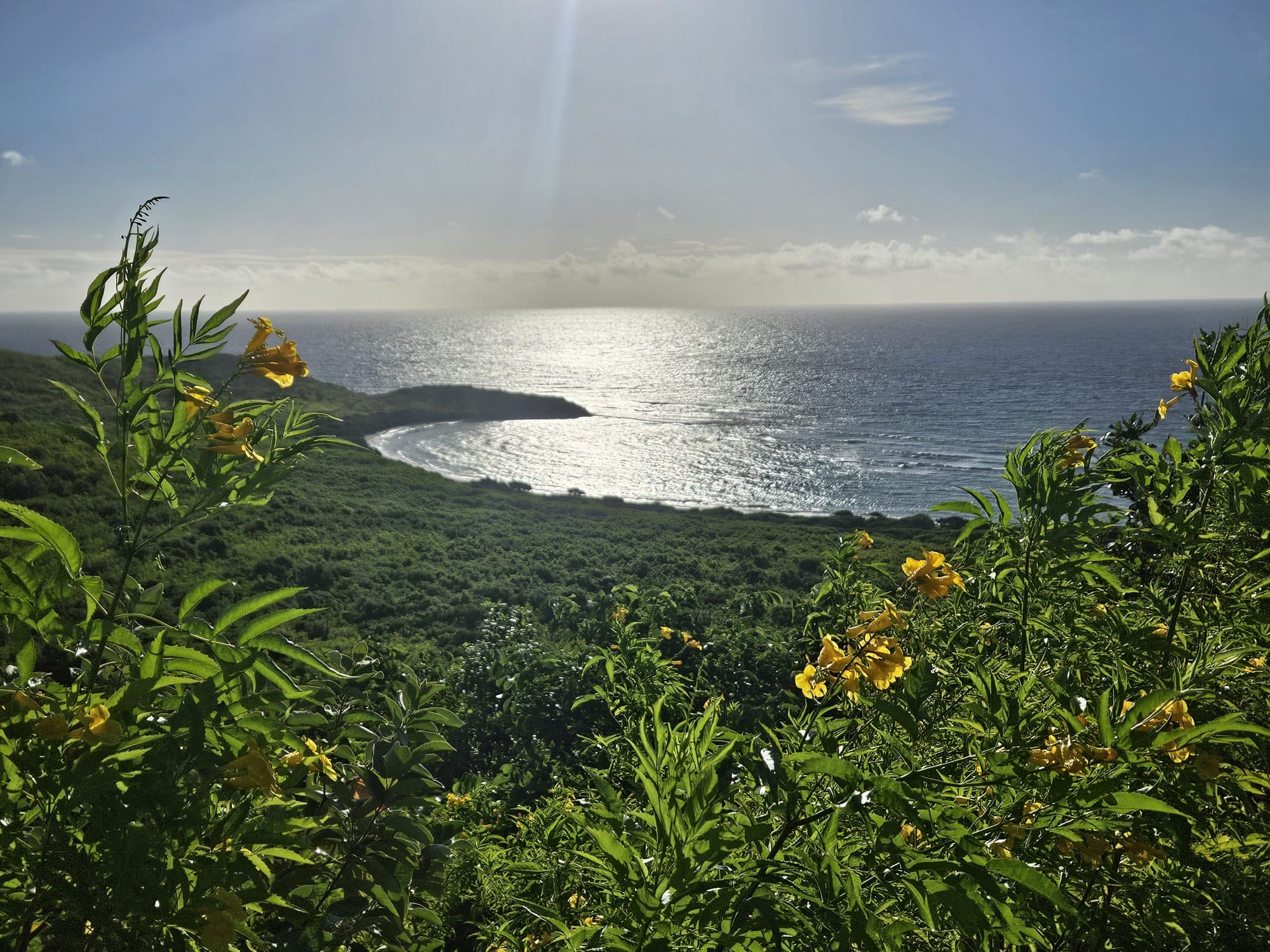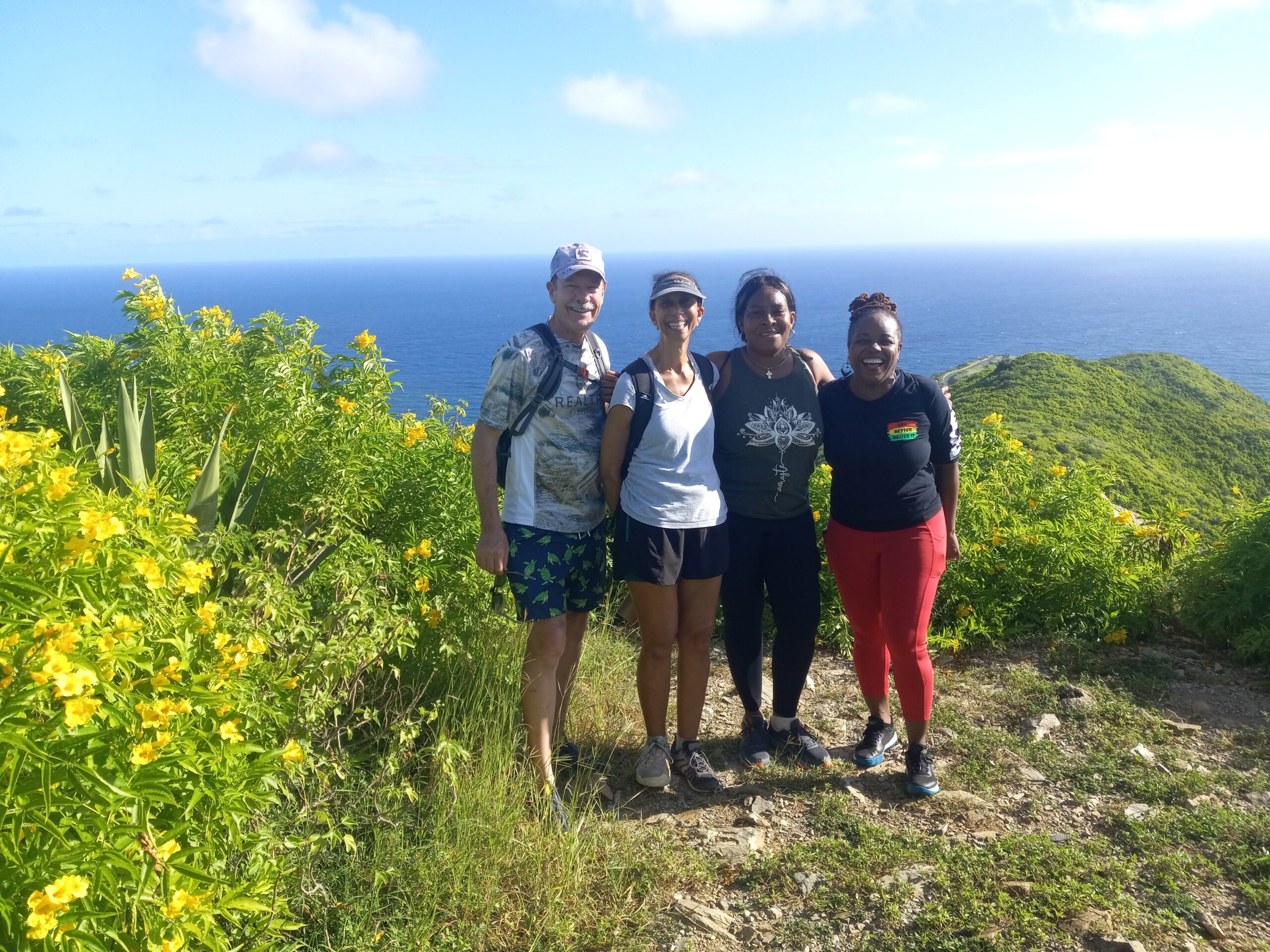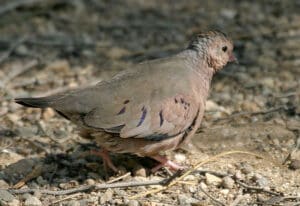
Whenever my good friend Nadia Owen-Gaumond is on St. Croix, she contacts me to explore the island on foot. Recently, we explored Grape Tree Bay Ridge trail that led to Goat Hill some 674 feet above sea level along with some of her colleagues and friends. December is a beautiful month to explore the east end of St. Croix with its green hills, deep lush valleys, lovely sandy beaches, and the blossom of the Yellow Cedar or Ginger Thomas (Tecoma stans), the official flower of the territory, blanketing the landscape that was once known for its wildlife, especially ground doves.

To think about it, the natural history of the Virgin Islands is unknown to our children and even adults. The subject matter is not taught in our school system or in higher education in the islands. I am not talking about natural history of the United States. I am referring to the natural history of the Virgin Islands where our children can appreciate their natural surroundings and the wonder in nature. This includes the world of plants, animals, insects, fungi, and other organisms in an island environment.
The late Crucian naturalist George A. Seaman learned from a young age by the side of his stepfather John DuBois the wonder of wildlife in the Virgin Islands. Seaman learned to hunt with his catapult as a boy observing the insects, birds, fishes, plants, planets, stars, and other natural wonder of nature around him on St. Croix. He was and still is today well known in the scientific world for his contribution as an ornithologist, explorer of nature, adventurer, and protector of wildlife.
Believe me, it was the ground dove where Seamen became acquainted with nature as a young boy. In his book titled Every Shadow is a Man: A Journey Back into Birds and Time, Seaman spoke about the natural history of ornithology in the Virgin Islands. “I beg your indulgence while I digress and delve back to the year 1912 when, you might say, the Zenaida or Mountain Dove and I first became acquainted,” noted Seaman. Seaman grew up on St. Croix during the years when hunting was a passion, streams flowed year ‘round, and agriculture was still a major part of Virgin Islanders’ lives, especially on the “big island.”
Life was much different back then where doors were left unlocked and neighbors picked up your clothes off the line if it was about to rain. Or your next-door neighbor gave you sugar if you ran out of it to make your morning bush tea. Life was sweet in those days and people worked hard to make a living. As a young boy, Seaman enjoyed hunting and fishing with his boyhood friends an adventure many children today don’t experience.
At age 16, Seaman left St. Croix with only $25 in his pocket and went to New York to find work. Because of his knowledge of birds and other creatures of the wonder in nature on St. Croix, which Seaman taught himself, he was able to get a job at the American Museum of Natural History as a taxidermist. At the museum, Seaman relabeled birds of the world for Dr. Frank M. Chapman. He also assisted the famous African explorer, Car Ackley, as a taxidermist. He was a field collector of wildlife and plants, which led him to five expeditions in South and Central America and the Pacific.
In Venezuela, he worked for Standard Oil, and during World War II he conducted a successful search for wild rubber trees in Brazil. During the 1920s on St. Croix, jobs were scarce. So, Seaman looked for employment elsewhere. He worked in the Dominican Republic for a while and returned home to St. Croix. Although he found managerial work, he was not satisfied at heart for his desire was to explore and see the other side of the “hill.”
While in Venezuela, Seaman got a notice that his beloved mother was sick. He returned home to St. Croix to attend his sick mother. Sadly, she passed away. George was about to leave St. Croix again when the Virgin Islands governor enticed him to stay and offered him a position as a Wildlife Supervisor for the Department of Fish and Wildlife. At age of 45, Seaman started a new career on May 16, 1949, in his birthplace of St. Croix.
At his new job as a wildlife biologist, Seaman was responsible for carrying out a general survey of existing bird species in the Virgin Islands and their life histories in order to present scientific data for habitat improvement for island game birds. He was to survey birds’ activities, such as the food habits of various species on the islands, diseases, distribution and migratory routes, population trends and predator determinations. Banding of pigeons and doves was also to be carried out since little was known about their inter-island wandering and seasonal movements.

When I hiked with Nadia and her colleagues and friends on the east end of St. Croix, I thought of Seaman when I explained to them how the rolling hills, valleys and coastal environment looked like more than 150 years ago. At one time, the east end of St. Croix had an abundance of wildlife, especially doves. Seaman studied the doves carefully. He noticed doves were always in the fields of Maran bush, which covers most of the east end with shrub plants and thorn scrub dry forests where doves preferred crawling on the ground looking for food. He wondered why these birds fed in the hottest hours of the day looking for food.
Upon closer inspection, Seaman noticed the seed capsules of the Maran bush popped in the heat of the day scattering the seeds all over the ground, which is one of the favorite foods of doves. I went on and told my audience that the east end of St. Croix was known by old timers for thousands of Ground Doves, the smallest of the three dove species in the Virgin Islands carrying the longest name, Columbigallina passerine.

Ground doves are no longer found in abundance on the east end of the island. Why? One species: Homo sapiens. Nevertheless, hiking early in the morning on the east end of St. Croix, it is a good way to reflect on your achievements and set goals for the New Year.
I will leave these few words of wisdom by Seaman: “We receive no less than the cricket; we receive no more! From our cathedrals’ reaches no voice heard plainer than the mockingbird’s. Who prays better than a dove, let him speak. Who walks closer to God than a night-blooming cereus, let him challenge the heavens.”
— Olasee Davis is a bush professor who lectures and writes about the culture, history, ecology and environment of the Virgin Islands when he is not leading hiking tours of the wild places and spaces of St. Croix and beyond.


